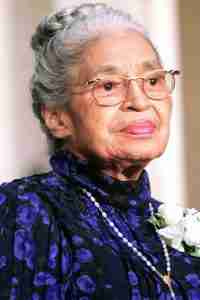ROSA PARKS
On the evening of December 1, 1995, after a day’s work, Rosa Parks routinely boarded bus 2857 which would take her home. Rosa sat in the central rows: on that date the segregationist laws in force required that blacks had to sit in the back, whites in front and the seats in the middle could be used by both but if the bus was full, blacks had to give up their seats.
After a few stops a white passenger got on and driver James Blake, known for treating blacks without dignity, asked Rosa Parks to get up to give him his seat. She refused in disobeying the law. The driver called the police and Rosa was arrested, jailed and released a few hours later saved by Ed Nixon, an African American activist
This shocked the community and the activist, and Nixon, president of the Montgomery NAACP chapter led the attempt to turn Rosa’s arrest into a one-day public transit boycott. A boycott that took place on December 5, 1955, the date of Rosa’s trial in court. A boycott that lasted for 381 days.
The leaders of the movement including Martin Luther King asked to join the FIGHT AGAINS SEGREGATION and 90% of Montgomery’s black citizens joined the boycott of public transport. In this period African American taxi drivers to support the protest lowered the fares of bus tickets, black citizens preferred to walk or organize carpool to get around. Transport companies saw a drop in revenue and began to complain about the large loss of revenue
The truth about the Montgomery bus boycott is that it took even more courage, tenacity and teamwork than we think to undermine the segregationist and racist policies that dominated the country
The activist is the brave, the one who proposes, the one who believes that he believes that things can be changed, the one who is personally dedicated to making the change he hopes to see in the world. The time has come for everyone to stand up and lend a hand that can help everyone





